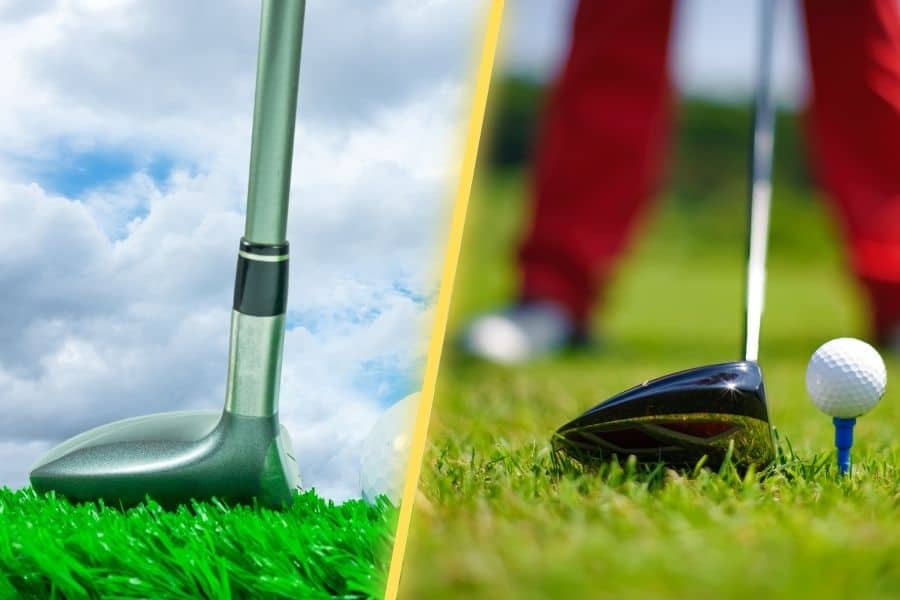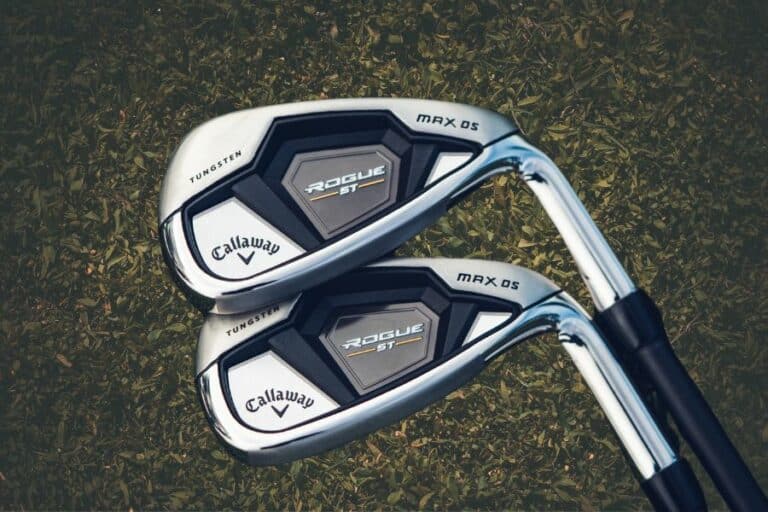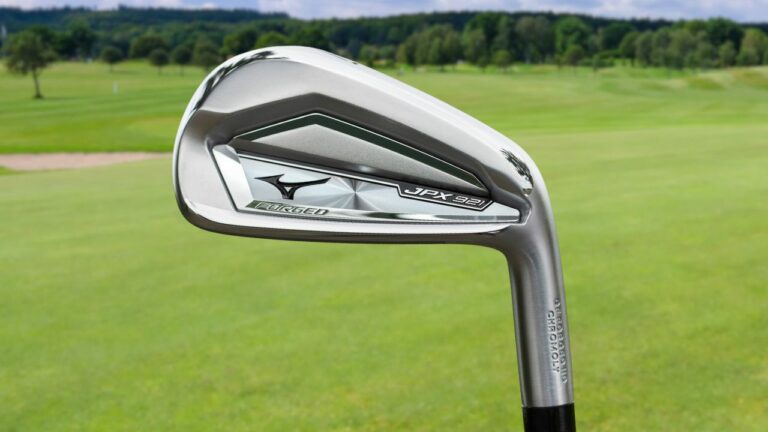Fairway Wood Vs Hybrid: Purpose, Design, And Performance

Understanding the basics of a fairway wood versus a hybrid club can simplify your golf game and set you up for success on the course. Both clubs have their own advantages and disadvantages, so it pays to know when you should reach for each one.
As a golfer, you have different types of clubs in your golf bag to choose from, each with its unique function and purpose. However, the fairway woods and the hybrids are two popular options for long-distance shots off the golf course.
I. Purpose of fairway wood vs hybrid golf clubs
The primary purpose of fairway woods and hybrids is to help golfers hit the ball farther and more accurately from the fairway or rough. They are designed for long-distance shots, typically from the middle to the back of the fairway.
1. Fairway woods
Woods typically have longer and lighter shafts besides the driver, and the head is shaped like a small wood, with a more rounded and forgiving shape.
Fairway woods are generally easier to hit than drivers and can be used to launch the ball higher and achieve a more penetrating ball flight.
The primary function of a fairway wood is to provide power and distance off the tee or fairway.
2. Hybrid
Hybrids help fill the gap between woods and irons in relation to distance gapping.
Hybrid has a wood-like head with a more iron-like shaft, and it is designed to be more forgiving and more accessible to hit than a long iron.
The primary function of a hybrid is to provide a blend of power and accuracy with more effortless playability.
Hybrids are typically more accurate than fairway woods. However, golfers can use them to produce a lower, more sweeping ball flight and better control on approach shots.
The “sweet spot” is larger, and the whole club face gives more forgiveness than on a long iron or fairway wood.
II. Who should use fairway woods and hybrid clubs?
In general, fairway woods are best for golfers who are looking for maximum distance and are comfortable with a higher, more penetrating ball flight.
At the same time, hybrids are better for golfers who need more forgiveness and control on approach shots.
Ultimately, the choice between a fairway wood and a hybrid will depend on the individual golfer’s playing style, skill level, and course conditions.
Even if it means sacrificing accuracy, many golfers are more confident with fairway woods and would instead hit them than the thin, bladed long irons.
Note: Most golfers with slower swing speeds, a steep angle of attack, or difficulty hitting woods from closely mowed fairways should think twice before using their wood. However, For the slower swing speed players needing extra carry distance, the 7 wood could be the best bet.
III. Hybrid vs. Fairway wood – Which one to replace?
Players looking to update their golf bag should consider replacing a traditional fairway wood with a hybrid. Hybrids are becoming increasingly popular due to their ease of use and accuracy, making them ideal for players of all skill levels.
Compared to fairway woods, hybrids tend to have a lower loft angle and are more forgiving on off-center hits, allowing golfers to hit straighter shots and longer distances.
When deciding which club type to replace, it’s important for players to factor in the different values that each club offers. Therefore, they can make an informed decision based on their individual needs and playing style.
Many golfers are increasingly turning to hybrids to replace the lower-lofted irons, such as the 3-, 4- and even 5-iron. This is because hybrids are easier to hit accurately than traditional clubs, meaning golfers of all skill levels can benefit from using them.
Men should look for a hybrid with an angle of 14-16 degrees when looking for a replacement for their 3-wood or 20-22 degrees if they want to replace a 7-wood or 4-iron.
Women should opt for a club ranging from 24-26 degrees when replacing their 9-wood or 4-iron and 27–28 degrees when attempting to replace their 5-iron.
Below is the table that includes the irons various hybrids are equivalent to and can replace
| HYBRID CLUB | HYBRID LOFT | EQUIVALENT IRON / WOOD |
| 1 Hybrid | 14-16 degrees | 1 iron / 3 wood |
| 2 Hybrid | 17-19 degrees | 2 iron / 4 wood |
| 3 Hybrid | 19-21 degrees | 3 iron / 5 wood |
| 4 Hybrid | 22-24 degrees | 4 iron / 7 wood |
| 5 Hybrid | 25-27 degrees | 5 iron / 9 wood |
| 6 Hybrid | 29-31 degrees | 6 iron / 11 wood |
| 7 Hybrid | 32-34 degrees | 7 iron / 13 wood |
IV. Fairway Woods vs. Hybrids Distance Chart
It’s worth noting that the exact distance difference between fairway woods and hybrids will depend on a variety of factors, including the specific club, the player’s swing speed and technique, and the course conditions. In general, though, fairway woods tend to hit the ball farther than hybrids.
1. Trackman average stats from PGA Tour
With TrackMan, we have comprehensive stats from the PGA TOUR to give you a better understanding of your game with respect to 3-wood, 5-wood and hybrid (15°-18°).
| Stats | 3-wood | 5-wood | Hybrid(15°-18°) |
| Club Speed(mph) | 107 | 103 | 100 |
| Ball Speed(mph) | 158 | 152 | 146 |
| Smash Factor | 1.48 | 1.47 | 1.46 |
| Spin Rate (rpm) | 3655 | 4350 | 4437 |
| Max Height (yds) | 30 | 31 | 29 |
| Landing Angle | 43° | 47° | 47° |
| Carry (yds) | 243 | 230 | 225 |
2. Hybrid distance based on gender
Golfers of all genders can benefit from using hybrids to improve their swing. But how do the distances vary between men and women?
This hybrid distance chart compares the distance achieved using hybrids based on gender.
| Club | Slow | Medium | Fast |
| 1-hybrid | M: 194 F: 115 | M: 226 F: 151 | M: 245 F: 194 |
| 2-hybrid | M: 176 F: 104 | M: 205 F: 137 | M: 222 F: 176 |
| 3-hybrid | M: 163 F: 96 | M: 189 F: 126 | M: 205 F: 163 |
| 4-hybrid | M: 154 F: 91 | M: 179 F: 119 | M: 194 F: 154 |
| 5-hybrid | M: 145 F: 85 | M: 168 F: 112 | M: 183 F: 145 |
| 6-hybrid | M: 136 F: 80 | M: 158 F: 105 | M: 171 F: 136 |
| 7-hybrid | M: 127 F: 75 | M: 147 F: 98 | M: 160 F: 127 |
| 8-hybrid | M: 118 F: 69 | M: 137 F: 91 | M: 148 F: 118 |
| 9-hybrid | M: 104 F: 61 | M: 121 F: 81 | M: 131 F: 104 |
M = Males, F = Females
3. Fairway Wood Distance based on skill level
Whether it is a beginner or advanced golfers, learning the proper distance for fairway wood shots can be a daunting task.
But with practice and the proper technique, you can soon master your fairway wood distance. Below we have added a table that analyses the fairway wood distance based on skill level.
| Club | Beginner | Average | Good |
| Driver | 190 yards | 220 yards | 250 yards |
| 2 Wood | 180 yards | 215 yards | 235 yards |
| 3 Wood | 170 yards | 210 yards | 225 yards |
| 4 Wood | 165 yards | 205 yards | 215 yards |
| 5 Wood | 150 yards | 195 yards | 205 yards |
V. Differences in design: Fairway woods vs. Hybrids
While both clubs are designed to help you hit the ball farther, they have some fundamental differences in design and performance that you should consider when deciding which one to use.
1. Shape and size of the club head
One of the main differences between a fairway wood and a hybrid is the shape and size of the head. A fairway wood typically has a larger and more rounded head, while a hybrid has a smaller and more compact head.
The larger head of a fairway wood can provide more accurate tee shots, but it can also make the club more difficult to control and shape shots. The smaller head of a hybrid is easier to control, but it may offer less forgiveness on mis-hits.
2. Length and weight of the shaft
Another difference between the two clubs is the length and weight of the shaft. A fairway wood usually has a longer and lighter shaft than a hybrid, which can help to generate more speed and distance.
However, a lighter shaft can make the club more difficult to control and feel for some golfers.
A hybrid has a shorter and heavier shaft, making it easier to control and feel, but it may provide less distance than a fairway wood. Hybrids tend to have more weight, like in the irons in the heel of the club head.
3. The angle of the clubface
The angle of the clubface is also a factor to consider when choosing between a fairway wood and a hybrid. A fairway wood has a more upright clubface angle, which can help to launch the ball higher and achieve a more penetrating golf ball flight.
A hybrid has a flatter clubface angle, which can help to produce a lower, more sweeping ball flight and better control on approach shots.
VI. Differences in performance
When it comes to performance, both fairway woods and hybrids can be effective options for long-distance shots off the fairway. However, there are some key differences to consider.
Fairway woods are generally more powerful and provide more distance, but they may not be as accurate or forgiving as a hybrid. Hybrids are typically more accurate and forgiving but may offer less distance than a fairway wood.
1. Distance
Fairway woods are generally more powerful than hybrids and can provide more distance off the tee or fairway. This is due to their longer and lighter shaft and more upright clubface angle, which helps launch the ball higher and achieve a more penetrating ball flight.
However, fairway woods may not be as accurate or forgiving as hybrids, affecting their overall distance performance.
2. Accuracy
Hybrids are typically more accurate and forgiving than fairway woods. This is due to their smaller and more compact head and their flatter clubface angle, which helps to produce a lower, more sweeping ball flight and better control on approach shots.
While fairway woods can be challenging to control and shape shots with, hybrids offer a greater margin for error and can be easier to hit consistently.
3. Ball flight and trajectory
The ball flight of a fairway wood is generally higher and more penetrating than a hybrid. This is due to the club’s more upright clubface angle, which helps in a high launch angle and achieves a steeper descent angle.
On the other hand, a hybrid has a flatter clubface angle, which can produce a lower, more sweeping ball flight and better control of approach shots.
Furthermore, the hybrid’s superior lofting capabilities make it a better option than wood when faced with fairway bunker shots.
4. Versatility and shot-making ability
Both fairway wood and the hybrid club can be versatile and effective clubs for a variety of different shot-making situations. However, they differ in terms of their shot-making ability and the types of shots they are best suited for.
Fairway woods are generally better for shaping shots and hitting various shots. At the same time, hybrids are more versatile and better for controlling, shaping shots, and hitting more consistent and straight shots.
VII. What to consider while choosing between a fairway wood and a hybrid?
When choosing between a fairway wood and a hybrid, there are several factors to consider such as:
1. Playing style and skill level
If you are a beginner, a hybrid may be the better choice as it is easier to hit than a fairway wood.
On the other hand, if you are an experienced golfer, a fairway wood may be a better fit as it offers more accuracy and control.
2. Course conditions and terrain
The next factor to consider is the terrain you will be playing on. If you play on tight fairways, fairway wood is typically better, as the lower loft allows for more control and accuracy.
However, a hybrid may be a better option if you play on long fairways, as its higher loft can help you get the ball up in the air.
3. Availability in the golfer’s bag
Fairway woods are usually available in golfers’ bags in either 3, 5, or 7 wood options. Hybrids are typically offered in various lofts ranging from 2 to 6 hybrid clubs.
For most golfers, it is recommended to have at least one fairway wood and two hybrids in their bag for maximum versatility and shot-making ability.
Conclusion
Both fairway woods and hybrids are powerful, versatile, and effective clubs for long-distance shots off the fairway.
Fairway woods are generally more powerful and provide more distance, but they may not be as accurate or forgiving as a hybrid.
Hybrids are typically more accurate and forgiving than fairway woods but may offer less distance.
For an average golfer, feeling comfortable with the club is a much more critical factor than simply having the right club.








